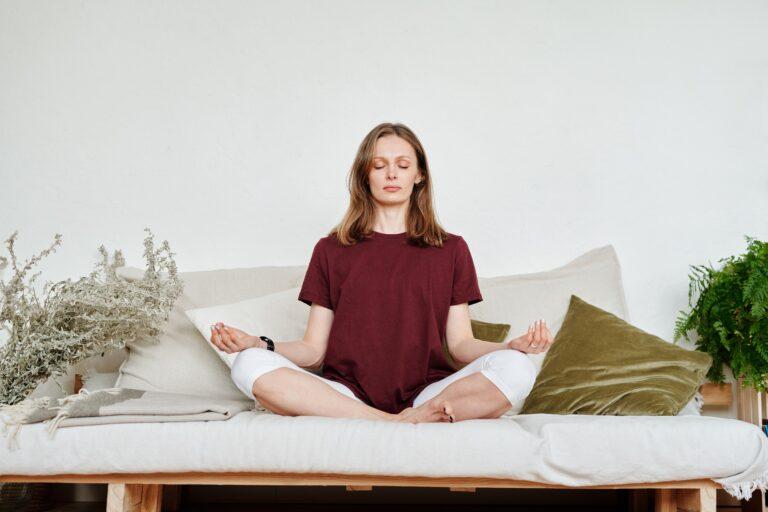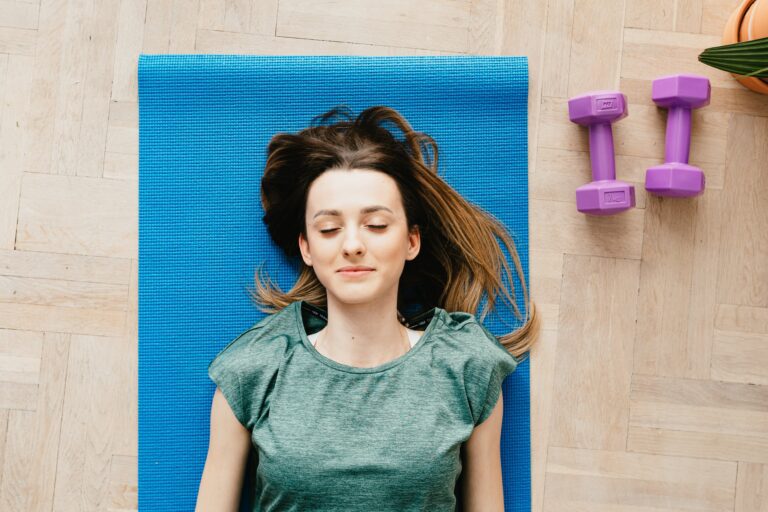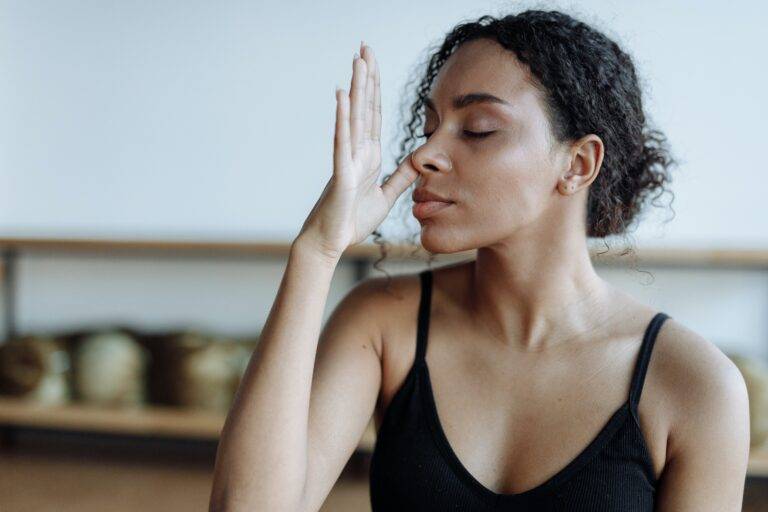10 Simple Hacks How To Achieve Lucid Dreams
Have you ever dreamed of floating through the sky, conversing with your idol, or even flying like a superhero? The experience of lucid dreaming can turn your nighttime adventures into a real adventure. If you’ve ever wanted to take control of your dreams and explore the unlimited potential of your mind, you’re in the right place. In this article, we will explore the secrets of lucid dreaming, revealing ten simple tricks to achieve lucid dreams.
Lucid dreams can be described as a superpower that we can experience while sleeping. It’s an experience where we are aware of our dreams. This means that we are able to control everything that happens in our dreams, as if we were directors of our own film. Sounds fantastic, doesn’t it? The only limit is our own imagination.

How do lucid dreams occur?
During sleep, our brains go through different phases. One of these phases is the REM (Rapid Eye Movement) phase, which is also the most well-known. This is the phase where the eyes move rapidly, hence the name. During this time, the most vivid and intense dreams occur. The brain becomes more active while the muscles of the body remain relaxed.
It is precisely during the REM phase that we can lucid dream. Our consciousness, our ability to think and be aware, remains active even though we are asleep. Researchers suggest that to achieve dreams, it is crucial to maintain a high level of consciousness and alertness during the REM phase of sleep. This can be achieved by practicing various techniques such as reality checking, mindfulness exercises, and visualization before sleep, which we will discuss soon.
Can lucid dreams bring benefits to real life?
Lucid dreams can be a great opportunity to delve into our inner world. Even experts agree that lucid dreams can have therapeutic effects. They can encourage us to explore our own thoughts, emotions, and desires, which can contribute to better self-awareness. One option is to write down our dreams and analyze patterns to better understand ourselves. You can use these questions:
- Who were the key characters in my lucid dreams? How did I feel in their presence?
- What was I doing in my lucid dreams? What actions did I take and why?
- Where did my lucid dreams take place? What was the environment like and what were the events around me?
- Which of my desires, fears, or worries were reflected in my lucid dreams?
- How did I feel when I became aware that I was dreaming? How did I react, and what did I do at that moment?
- Which parts of my lucid dreams were the most vivid and expressive? Why did I focus the most on these elements?
- What did I learn or realize about myself during my lucid dreams?
- What patterns or recurring themes emerged in my lucid dreams? What might these patterns mean in my real life?
- How did I feel when I woke up from lucid dreams? What were the feelings and thoughts that remained with me?
- What did I decide to do or change in my real life based on the insights gained from my lucid dreams?
Not only do lucid dreams allow us to delve deeper into ourselves, but they also help us overcome fears. It may not be a coincidence that we encounter our greatest fears or traumas in lucid dreams. With such dreams, we can gradually overcome our fears and strengthen our awareness of what hinders us in real life.
With lucid dreams to success..
Some famous people have used lucid dreams to their advantage. They have come up with final solutions and achieved set goals through dreams.
Paul McCartney
I’m sure you know one of the most famous rock bands, The Beatles. Paul McCartney stated that in 1965, he dreamt of the song Yesterday, the music stuck in his memory, and when he woke up, he played it on the piano. Of course, he couldn’t sit still, so he wondered if he had heard this music somewhere before, so as not to reproduce someone else’s song. And so, together with John Lennon, he later created the lyrics.
Elias Howe
Innovator Elias Howe invented the revolutionary sewing machine in 1845, claiming that he created it based on his dreams. Although he wasn’t the first to invent the sewing machine, he improved it to such an extent that he received a special award.
Albert Einstein
We all know Albert Einstein, who through lucid dreams came up with incredible discoveries, namely the famous theory of relativity. Even as a child, he dreamt of being able to reach the speed of light so quickly on a sleigh down a steep slope. But this time, the stars around him changed their appearance. Based on exploited dreams, the book Einstein’s Dreams was also published. In which he shared 30 episodes of dreams.
Salvador Dalí
The famous painter Salvador Dalí claimed that a large part of his artistic ideas came from his lucid dreams. His works are full of surrealistic elements that appeared in his dreams.
Nikola Tesla
Famous inventor Nikola Tesla claimed to have received some of his inventions in dreams. Although it is not clear whether these dreams were lucid, Tesla often mentioned that his dreams served as a source of inspiration for his revolutionary inventions.
Robert Louis Stevenson
Author of “Treasure Island,” Robert Louis Stevenson, admitted to starting to write the story based on dreams he had while sleeping. This approach helped create one of the most famous adventure stories of all time.
10 Techniques to achieve lucid dreaming
Keep a dream diary
Most dreams are forgotten in the morning, you may only remember them fleetingly or not at all. In fact, we have 3 to 7 dreams every night. Therefore, a diary will help you remember your dreams, which is the basis for practicing lucid dreams. Every morning, as soon as you wake up, write down everything you remember that happened to you in your dream, down to the last detail, and incorporate that into your routine. Notes will be useful in the future and will strengthen memory.
Reality Check
Reality checking is important as it will help you develop awareness and recognize whether you are in real life or in a dream. Let’s look at some exercises:
Finger checking
Regularly check the number of fingers on your hand. In real life, you can do this several times a day. Ask yourself, “Am I in real life or am I dreaming?” If you carry this practice into dreams, you’ll notice that your fingers may not behave as they do in real life, which will help you recognize that you are dreaming. When you’re in the realm of imagination, your fingers may appear: longer, thicker, of strange shapes, or you may have more than just 5 fingers on one hand.
Jumping Attempt
Try jumping into the air and surrendering to flight. In real life, of course, you won’t be able to fly, but you can regularly perform this exercise to develop the habit of checking your state. In dreams, you may actually rise and start flying, which will alert you that you are dreaming.
Everything You Need To Know About Mahasamadhi And How To Achieve It
Reading Text
In real life, read some text or writing and memorize it well. Then turn the page and try to read the same text again. If you can read the text twice in real life, but maybe not in dreams.
Checking the Time
Frequently check the time on the clock. In real life, time will not change quickly, while in dreams, time may pass unusually. If you carry this habit into dreams, you may notice anomalies, such as: The clock showing unrealistically.
Questioning
Regularly ask yourself whether you are in real life or dreaming. This practice develops the habit of checking the reality of your state and can help you become aware in dreams.
Object Touching
Touching objects is unusually real; if you pay attention to the material and appearance of the object in your waking life, you will quickly find changes in objects you don’t recognize in your dreams. You can try the breathing trick, grab your nose to check if you start running out of oxygen or still breathe.
The MILD (Mnemonic Induction of Lucid Dreams) Technique
MILD is a technique developed by Stephen LaBerge and involves repeating suggestions before sleep. Before falling asleep, consciously repeat a sentence such as “Next time I dream, I will become aware that I am dreaming” or “I become aware when I dream.” This strengthens your awareness and increases the chances of lucid dreams.
The WBTB (Wake-Back-To-Bed) Technique
With this technique, you wake up in the middle of the night, stay awake for about 15-30 minutes, and then go back to sleep. During this time, focus on your intention to become aware that you are dreaming. This helps to awaken the part of your mind responsible for consciousness during sleep, which can increase your chances of lucid dreaming.
The FILD (Finger Induced Lucid Dreaming) Technique
With this technique, you focus on moving your fingers as you transition from wakefulness to sleep. By concentrating on your fingers while the body settles, it can increase the chances of lucid dreaming.
Is Ayahuasca Safe? Understanding A Powerful Psychedelic
SSILD (Senses Initiated Lucid Dream) Technique
With this technique, you focus on sequentially checking each of the five senses – sight, hearing, smell, taste, and touch – as you fall asleep. Repeat this process several times, which will enhance your awareness and chances of recognizing the dream state
Using Sleep Sensors
Incorporate sleep sensors, such as sleep masks with motion sensors or sound alarms, to alert you when the REM sleep phase is detected. This allows you to consciously awaken during dreams and perform techniques to achieve lucid dreaming.
Meditation for Awareness
Regular meditation practice can increase your overall awareness and ability to observe thoughts and feelings. This can help you recognize anomalies or unreal situations that occur in dreams, leading you to lucidity.
Using Aromatherapy
Before sleep, utilize specific scents such as lavender or eucalyptus, which have a calming effect. This increases your ability to perceive smells even during dreaming. In dreams, scents can become unusual or emphasized, helping you recognize that you are dreaming.
VILD (Visually Induced Lucid Dream) Technique
With this technique, you focus on visualizing the dream world as you fall asleep. Before sleeping, imagine your desired dream scene, such as flying through clouds or exploring exotic places. Try to visualize every detailed aspect of this dream scene, such as colors, shapes, and movement. As you begin to drift into sleep, focus on finding yourself in this dream scene and becoming aware as you enter the dream world. This technique harnesses the power of visualization to induce lucid dreaming.
The ADA (All Day Awareness) Technique
ADA is an approach that involves increasing overall awareness throughout the day. The goal is to stay more present in the moment, be aware of your surroundings, smells, sounds, and sensations. With this technique, you develop a habit of constantly observing the surrounding world, which then carries over into dreams. With greater awareness throughout the day, you are more likely to recognize inconsistencies in dreams and become a lucid dreamer.
We must also mention the appropriate bedroom temperature and a dark environment. Although it may not directly affect the occurrence of lucid dreams, they can impact better sleep quality and fewer awakenings throughout the night. The optimal sleep temperature is typically between 18 and 22 degrees Celsius. Creating a dark environment, free from unnecessary light, as darkness promotes melatonin production. You definitely don’t want light to interrupt your sleep and decrease the likelihood of having lucid dreams. All the best until next time.









